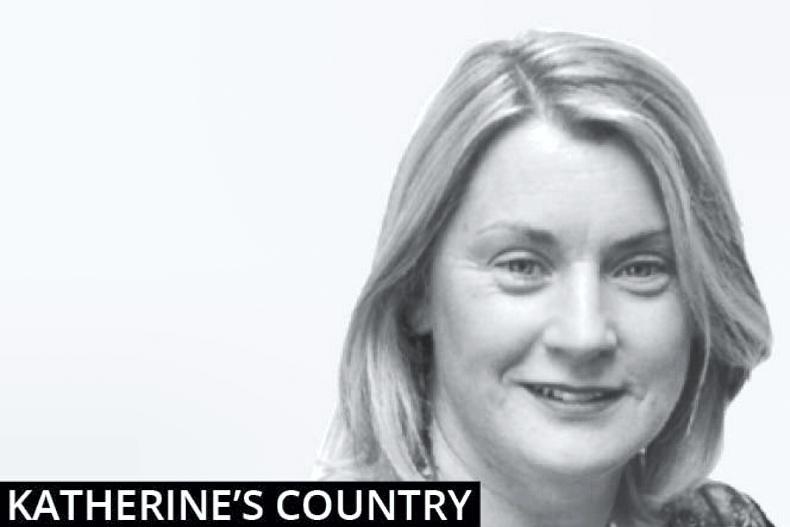I like to have everything right and in its place. I often think of my great friend and mentor, the late Maura E Fennelly. She preached to us as students of Farm Home Management in the Munster Institute in Cork on everything home management and dairy management.
She was a woman before her time who recycled and upcycled everything. Her philosophies were grounded in common sense. Maura advocated good, homegrown plain food. Her air miles were from the garden to the plate!

On organisation, there should be “a place for everything and everything in its place” she would say. She’d move on to methods of washing. With huge gesticulation she would show us “how to wash high up and low down” and demonstrate how to “wash from the bottom up and rinse down”. This was all done with two buckets and two cloths, one for washing and one for rinsing. Sugar soap, white vinegar and water or bread soda and water were the order of the day depending on the task.
As students we took her off when her back was turned. I regularly did her “wash high up and low down” routine for others and we’d laugh. It was funny then. Yet, I hear her voice in my head when I’m washing in that fashion in the house and yard. Every day I use the things she taught me. Just like many of the tasks we learn when we are young, these basic principles are now my own.
Maura loved feeding baby calves. Hygiene had to be just so. Buckets and feeders were washed in hot soapy water, rinsed and allowed to dry out, upside down on the shining dairy floor. No bacteria can survive without moisture. Maura always encouraged us to fix things as they got broken but as far as possible to use our own resources.
Good maintenance and upkeep of the house and farm were a must in her book. That way if a bad year struck at least everything was functional. I’m a firm believer in that philosophy. She came down like a tonne of bricks on us if we were unobservant or lacked common sense.
Multi-teat feeders
We use multi teat calf feeders in the calf pens. Most of them have 10 teats and we keep nine calves in a pen. The feeders are rinsed out after feeding and washed frequently. They are hung back on the gates in front of the pens. Most of them are Milkbar feeders with one or two JFC.
Two handles on the Milkbar ones have been broken for some time. It meant that they could no longer be adjusted and we had to take care not to allow them to close. If it did close, Philip would have to dismantle the handle and bolt it back again. It was a serious offence and elicited a string of criticism of the operator (usually me). So I decided to fix the problem and get new handles. It proved more difficult than I thought. Eventually I found them online in an American store and I had them in a few days.
Philip came in and the pack of two was on the kitchen unit. He started to laugh! “Mum, would you look at the picture! How come we never thought of hanging the feeders upside down on the gates?” All these years we have those feeders and we’ve been hanging them in the feeding position after washing. Then at feeding time, we’d drain them again and maybe wipe out an unsavoury message from a pesky crow.
Maybe we’re the only farmers in Ireland that had missed this piece of common sense. But just in case we’re not, hang the feeders upside down. They are bone dry when we get to them and dust free and clean. Obviously they were designed to be hung this way. If your gates are the right height the feeders just twist over into position. Alas, ours are one bar too high. So I’m again thinking of Maura! Her instruction for cleaning dairy equipment was simple: “Wash, rinse and allow to dry!”
It proves though that we must always be looking for ways to make our jobs easier. Another one of Maura gems was “work smarter, not harder”. I smile when I see the line of feeders hanging upside down!






 This is a subscriber-only article
This is a subscriber-only article





SHARING OPTIONS: